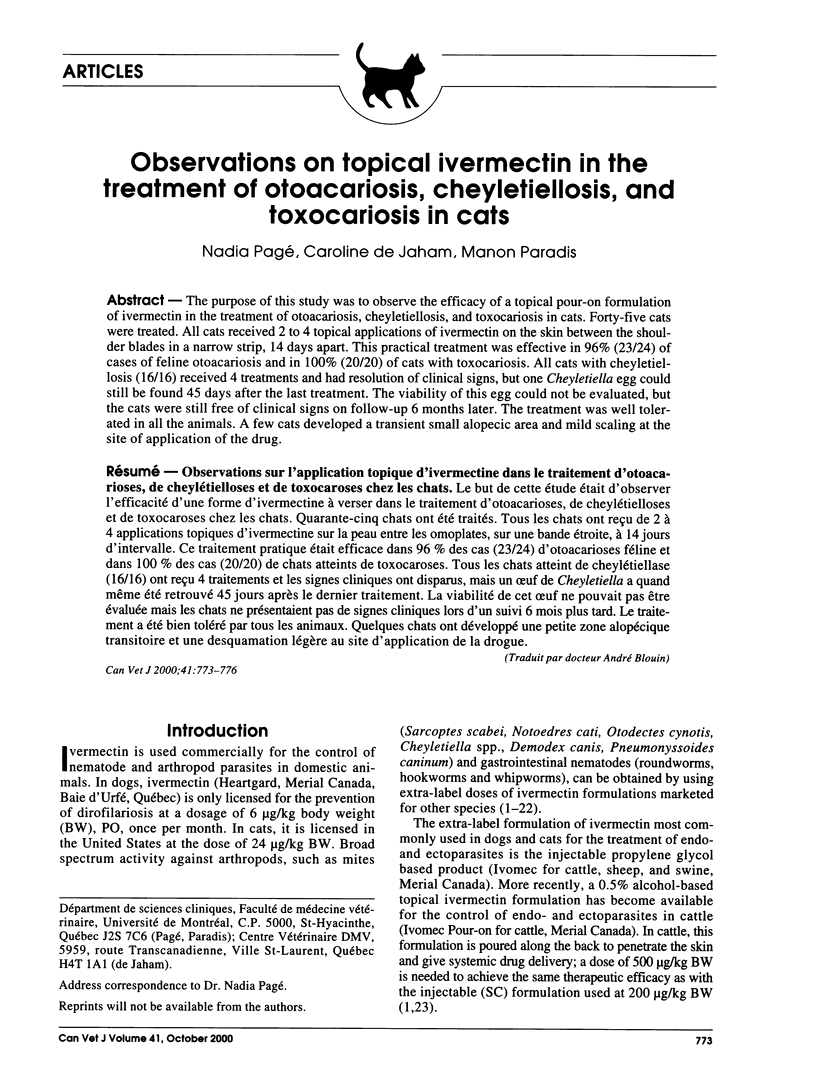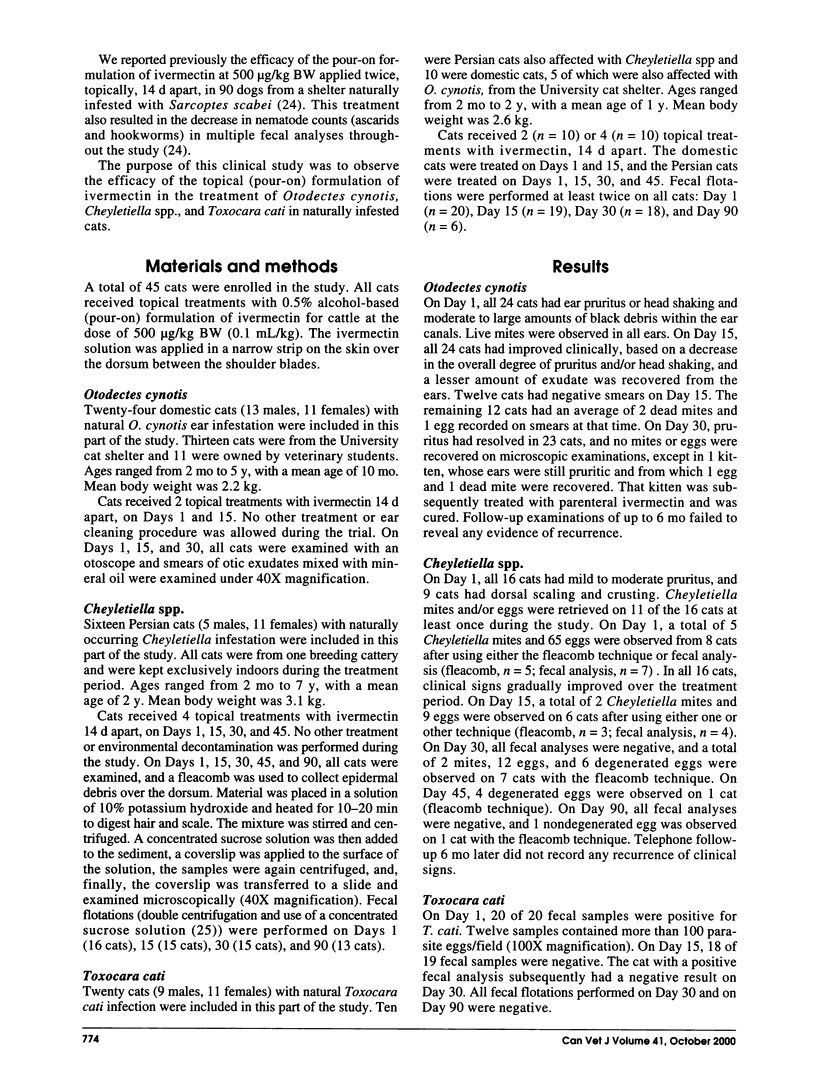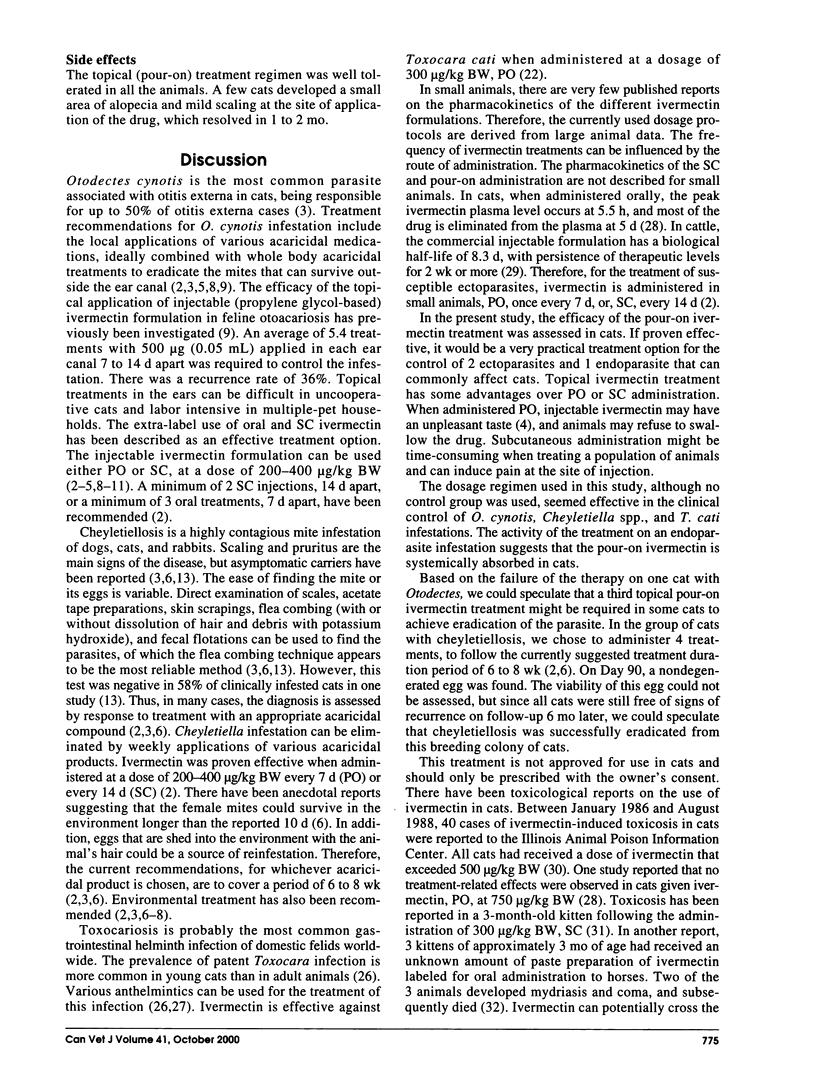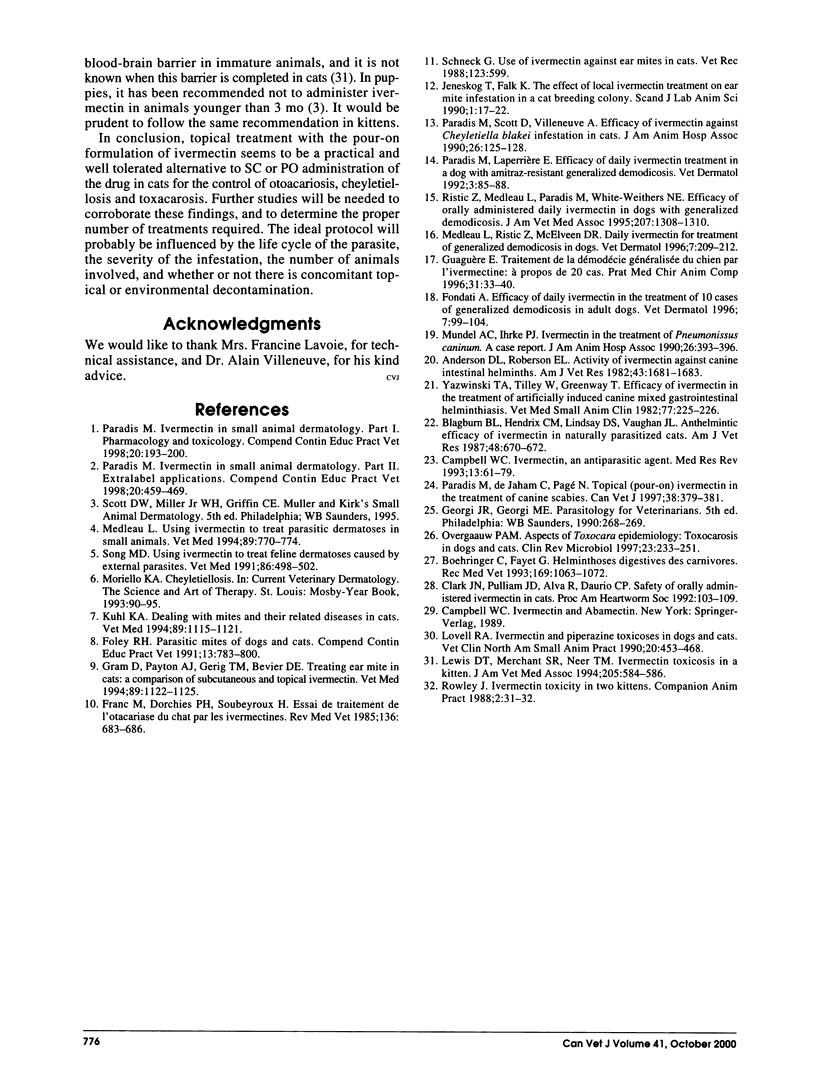Abstract
The purpose of this study was to observe the efficacy of a topical pour-on formulation of ivermectin in the treatment of otoacariosis, cheyletiellosis, and toxocariosis in cats. Forty-five cats were treated. All cats received 2 to 4 topical applications of ivermectin on the skin between the shoulder blades in a narrow strip, 14 days apart. This practical treatment was effective in 96% (23/24) of cases of feline otoacariosis and in 100% (20/20) of cats with toxocariosis. All cats with cheyletiellosis (16/16) received 4 treatments and had resolution of clinical signs, but one Cheyletiella egg could still be found 45 days after the last treatment. The viability of this egg could not be evaluated, but the cats were still free of clinical signs on follow-up 6 months later. The treatment was well tolerated in all the animals. A few cats developed a transient small alopecic area and mild scaling at the site of application of the drug.
Full text
PDF



Selected References
These references are in PubMed. This may not be the complete list of references from this article.
- Anderson D. L., Roberson E. L. Activity of ivermectin against canine intestinal helminths. Am J Vet Res. 1982 Sep;43(9):1681–1683. [PubMed] [Google Scholar]
- Blagburn B. L., Hendrix C. M., Lindsay D. S., Vaughan J. L. Anthelmintic efficacy of ivermectin in naturally parasitized cats. Am J Vet Res. 1987 Apr;48(4):670–672. [PubMed] [Google Scholar]
- Campbell W. C. Ivermectin, an antiparasitic agent. Med Res Rev. 1993 Jan;13(1):61–79. doi: 10.1002/med.2610130103. [DOI] [PubMed] [Google Scholar]
- Lewis D. T., Merchant S. R., Neer T. M. Ivermectin toxicosis in a kitten. J Am Vet Med Assoc. 1994 Aug 15;205(4):584–586. [PubMed] [Google Scholar]
- Lovell R. A. Ivermectin and piperazine toxicoses in dogs and cats. Vet Clin North Am Small Anim Pract. 1990 Mar;20(2):453–468. doi: 10.1016/s0195-5616(90)50038-8. [DOI] [PubMed] [Google Scholar]
- Overgaauw P. A. Aspects of Toxocara epidemiology: toxocarosis in dogs and cats. Crit Rev Microbiol. 1997;23(3):233–251. doi: 10.3109/10408419709115138. [DOI] [PubMed] [Google Scholar]
- Paradis M., de Jaham C., Pagé N. Topical (pour-on) ivermectin in the treatment of canine scabies. Can Vet J. 1997 Jun;38(6):379–382. [PMC free article] [PubMed] [Google Scholar]
- Ristic Z., Medleau L., Paradis M., White-Weithers N. E. Ivermectin for treatment of generalized demodicosis in dogs. J Am Vet Med Assoc. 1995 Nov 15;207(10):1308–1310. [PubMed] [Google Scholar]
- Schneck G. Use of ivermectin against ear mites in cats. Vet Rec. 1988 Dec 3;123(23):599–599. [PubMed] [Google Scholar]


